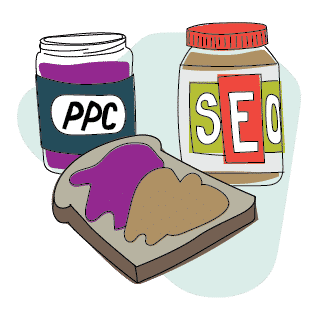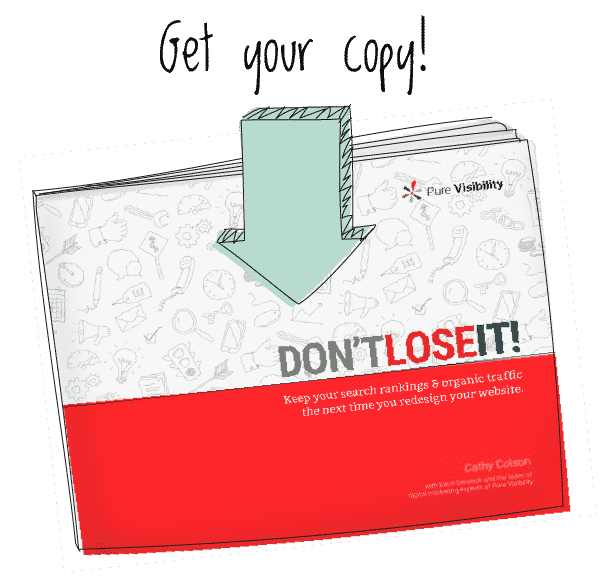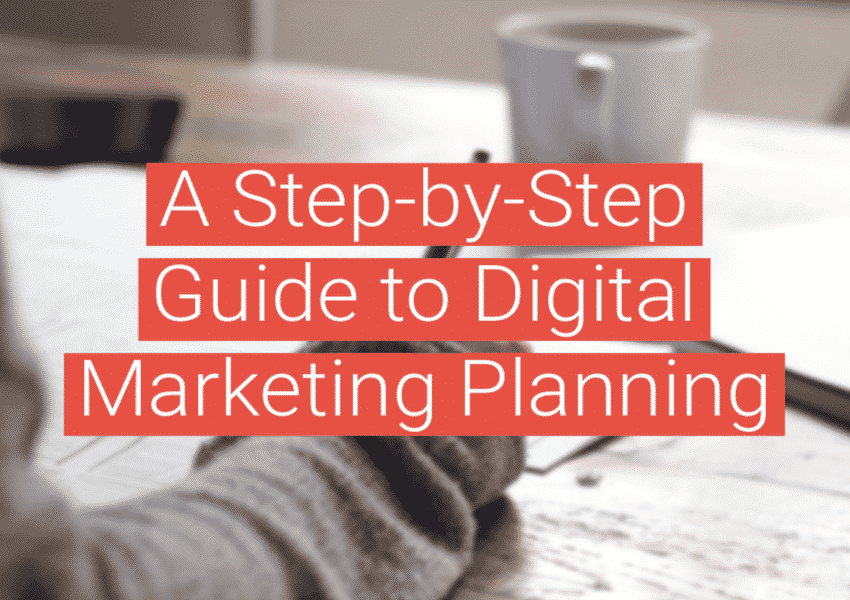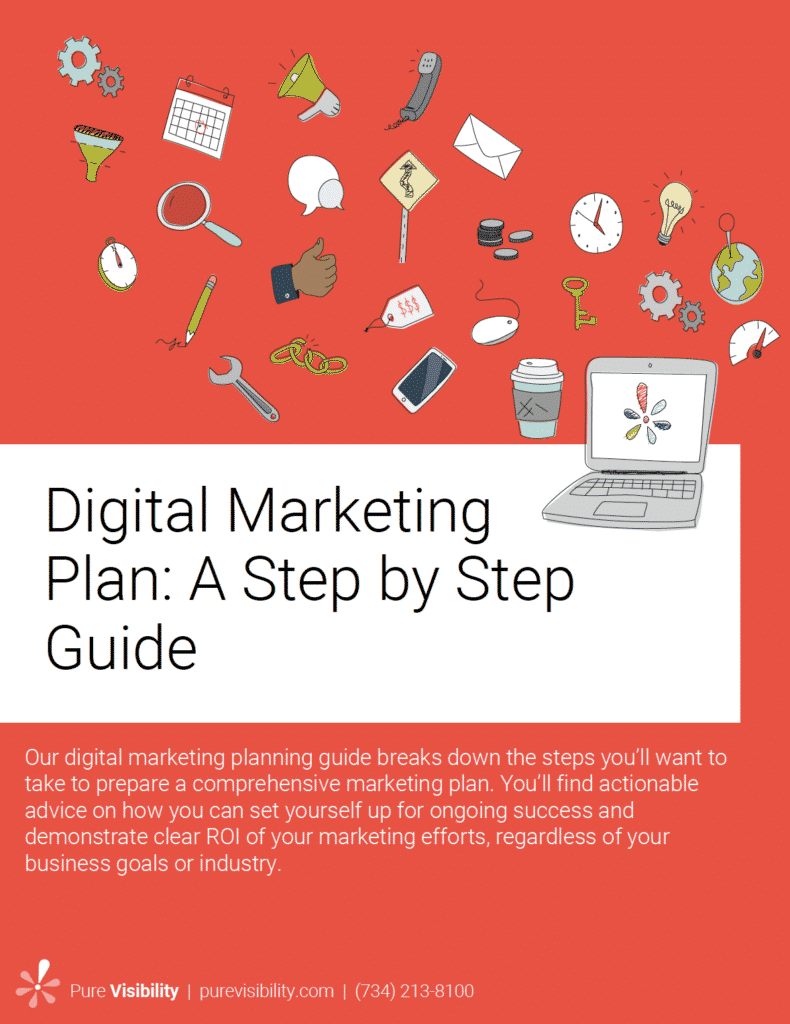Marketers should always look ahead when planning their digital marketing strategy. A quickly changing digital landscape — including the rollout of new ranking factors and cookieless tracking — makes it critical to prepare your marketing well in advance and ensure you’re following digital marketing best practices.
Table of Contents
Our digital marketing planning guide
Our digital marketing planning guide breaks down the steps you should take when preparing your marketing strategy, including a thorough review of your marketing goals, SEO, content, social media, and digital advertising. You’ll find actionable advice on how you can set yourself up for ongoing success and demonstrate clear ROI of your marketing efforts, regardless of your business goals or industry.
Step 1: Establish your digital marketing goals
Your digital marketing efforts should always begin with clear goals and objectives so you can tailor your strategy accordingly. Marketers focused on raising brand awareness, for example, will likely focus on metrics like impressions and use tactics such as display advertising and promoted content. Conversely, those focusing on filling the sales pipeline will want to use lead-generation strategies like remarketing campaigns and bottom of funnel content, with KPIs tied to conversions or sales.
Establishing your marketing goals early on will help inform your overall strategy and get the best return on investment.
Step 2: Review or identify customer personas
HubSpot defines personas as “fictional, generalized characters that encompass the various needs, goals, and observed behavior patterns among your customers.”
Identifying your customer personas (or reviewing your existing ones) will help you more accurately target your marketing efforts and address the pain points of the audience(s) most likely to convert.
- HubSpot has a detailed guide to creating detailed buyer personas that explains in greater detail why personas are important and how you can collect data to build them for your business.
- Our team also recommends HubSpot’s easy-to-use Make My Persona tool for clients who need a template for plugging in data.

Step 3: Review your website and SEO opportunities
No matter the marketing strategies you end up using, there’s a good chance that traffic will be driven back to your website. An optimized website is therefore one of your most valuable assets for both driving organic traffic and supporting other marketing efforts like digital advertising.
Unfortunately, many marketers don’t understand the basics of SEO and make simple mistakes that can hinder their content’s ranking potential and provide a poor user experience for visitors.
These blog posts cover some of the latest tips and trends to help you optimize your website:
- Is SEO Worth It? – You’d think the importance of organic traffic from Google and other search engines would make investing in SEO a no-brainer, but some business owners have real concerns about incorporating SEO into their overall strategy. This blog post breaks down eleven of the most common questions and concerns around SEO so you can highlight its benefits for your boss.
- 5 of the Best SEO Audit Tools – Whether you’re preparing for a website redesign or looking to improve the quality and quantity of your organic traffic, an SEO audit is the best mechanism for understanding what works and what doesn’t. If you don’t want to hire an SEO agency to conduct an audit, you can use these SEO audit tools to identify which of your pages are performing well, and to pinpoint problem areas that you can address to boost performance even more.
- Core Web Vitals: How to Prepare for Google’s Page Experience Update – In June 2021, Google released an algorithm update that incorporated new signals related to page experience. These new signals, called Core Web Vitals, are part of a larger effort by Google to ensure searchers are having the best experience when using its search engine and visiting pages from the search results. This blog post explains what Core Web Vitals are and how you can improve them to keep your website performing well.
- 5 Simple But Effective Strategies to Optimize Your Content for Voice Search – A report by Uberall found that roughly 21% of respondents used voice search every week, making it an important consideration when optimizing content. Fortunately, you can better optimize for voice search with these five simple strategies.
- Bonus: How to Optimize Google Business Profile for Multiple Locations – Google Business Profile is a useful, free tool for capturing local traffic and improving your company’s overall visibility. As a digital marketing company with years of experience doing local SEO for multi-location businesses, we’ve seen the many ways companies can confuse their listings and let best practices fall to the wayside. To address this, we’ve compiled an overview of Google Business Profile and its benefits, how to set up listings for multi-location businesses, best practices for optimization, and how to see if it’s all working.

Step 4: Analyze your competition
Performing a competitor analysis is an effective way to identify any gaps in your content, and is a great starting point for content planning. Doing a thorough SEO competitor analysis also provides valuable insights about where you stand in your industry and how much effort it will take to increase your organic visibility.
- In this blog post, you’ll find a step-by-step breakdown of how to do a SEO competitor analysis, including analysis of competitor keywords, backlinks, website traffic, and content.
Step 5: Identify your digital marketing strategies and align them with your marketing budget
Having a solid understanding of your marketing goals, website performance, and position in the industry (Steps 1-4) will help you make informed decisions about which digital marketing strategies will be most effective for your business.
Once you’ve reached this point in the planning stage, you can begin identifying the specific marketing channels and tactics you’ll want to use. For digital marketers, this will likely include a mix of SEO, digital advertising, email, and/or social media.
Of course, you want to make sure that you have the budget for these efforts and can plan accordingly. Whether you’re keeping work in-house or planning to partner with an agency, these resources will help guide you through the process.
- Digital Marketing Resources – As digital marketing experts we understand the importance of getting the right information fast. We’ve compiled a list of SEO and PPC resources that every beginner should read, with a handy breakdown of what each article or guide has to offer. These resources should help your team grasp the basics of digital marketing.
In addition to the digital marketing resources above, we also recommend taking a look at these helpful blogs:

- How PPC and SEO Work Together – Although both PPC and SEO are excellent marketing channels on their own, marketers can maximize their efforts when they use them simultaneously to target various stages of the marketing funnel, dominate the search results to drive more traffic, and increase the number of touchpoints for conversions. This blog post explains how SEO and PPC work together and can be used to reach their full potential.
- How to Choose the Right Ad Type – Advertising is only as effective as the planning that goes into it — remember, every marketing campaign should be matched to a business goal. In this article you’ll find an explanation of the different ad types and how to choose the right one for your market and business goals. You can even download this handy flow chart to help you take the guesswork out of choosing the right ad type for your business needs.
- Ecommerce PPC: 3 Steps to Selling Online – Companies looking to sell their products online will see the most immediate benefit from PPC. This blog focuses specifically on ecommerce PPC (pay-per-click) and how your marketing team can get started with digital advertising.
- Ecommerce SEO Guide – Ecommerce websites must fight to rank for highly competitive keywords in a limited number of SERP spaces. In order to compete, you need to do everything you can to optimize your ecommerce website to drive organic traffic. This ecommerce SEO guide takes a deep dive into the fundamentals of ecommerce SEO, including common issues and how to address them.
- Best Social Media for Your Business – Organic social media reach is on the decline; according to Hootsuite, the average reach of an organic post on a Facebook Page is about 5.20%. Despite this, many marketers still use organic social media to raise brand awareness, often combined with social media advertising for unprecedented levels of demographic targeting and higher visibility. And whether organic or paid, a successful social media strategy starts with picking the right social media platform(s) for your business and target audience.
- What Does Digital Marketing Cost? – Marketers unfamiliar with services like SEO packages and PPC management may be unsure how digital marketing pricing works and how to get the most out of their budget. This blog post breaks down the factors that influence cost, how services are typically priced, and the expected cost of SEO and PPC.

These blogs give advice on the other factors you’ll want to consider when choosing a digital marketing agency, and how to work with them effectively:
- SEO Agency vs In-House – If you’ve been in the market for a SEO service plan, you’ve probably read the articles detailing the warning signs of a bad provider: pitches or prices that seem too good to be true, buying links, and guarantees of #1 rankings top the list. In this article you’ll find advice on choosing the right SEO company, and the factors you should consider when weighing your decision.
- PPC Agency vs In-House – While digital advertising is a top priority for marketers, deciding where to spend their budget is more complicated, especially when it comes to choosing between advertising in-house or working with a PPC agency. This blog post explains the different considerations when choosing between agency and in-house (including cost), as well as advice for finding the best vendor for your business.

- How to Collaborate with an Agency – Partnering with an outside agency can provide you with new resources and expertise. And like any good partnership, it takes effort and communication from both sides to collaborate effectively. If you decide to go the agency route, you can use these methods and steps to improve your collaboration skills with others.
Step 6: Review your content strategy and build your marketing calendar
When planning your marketing strategy, you’ll want to begin by reviewing your existing content to identify content gaps and optimization opportunities. Optimizing the content you already have can be a relatively low effort but effective way to give your blogs and web pages a boost. These easy-to-follow posts walk you through content re-optimization:
- 5 Easy Steps to Reoptimizing Old Blogs – As we mentioned, reoptimizing your existing blogs can be an easy way to give underperforming content a second shot at high rankings, and it’s a good strategy for time-strapped marketers who can’t create a new post from scratch. This blog includes the five steps our digital marketing experts typically use when reoptimizing content.
- Content Optimization Checklist – In this post we’ve broken down content optimization into four steps that include writing for Google and HTML optimization, as well as other important factors like content strategy and promotion. When everything comes together you’ll have a solid piece of content that’s positioned to rank well.
- 5 Easy Marketing Tasks to Improve Your Digital Presence – In addition to tightening up your old blog posts, this listicle covers other simple ways you can tune up your digital marketing efforts, including tips for PPC, backlinks, and social media.
Once you’ve refreshed the content you have, you can focus on building a marketing calendar to help plan out and organize your content, including web pages, blogs, and social media posts.
- How to Create an Editorial Calendar – A detailed editorial calendar allows marketing managers to plan and organize their content across multiple months, giving them ample time to scale up their efforts and support larger initiatives. This prevents last-minute scrambling and helps the marketing team better understand its responsibilities for content. This post explains how to build a simple editorial calendar in three easy steps.

- How to Use a Social Media Planner – To have the most effective social media strategy possible, you should consider using a social media planner to organize your content. This will help confirm that your team is following best practices, and that your efforts tie back to your marketing goals. In this blog you’ll find best practices for using a social media planner, plus a free download.
When executing your strategy it’s important to remember the KPIs you chose in Step 1. You can’t just “set it and forget it” — digital marketing efforts should be monitored and measured to make sure they’re supporting your larger business goals. In some cases, underperforming campaigns may need to be adjusted over time to get a good return on your investment.
Bonus: Are you planning to redesign your website? Here are some resources to help you with your redesign planning from an SEO perspective.
A website redesign is a massive undertaking for any marketing team, and can have major ramifications for your rankings and traffic. Changes to design, architecture, and content all affect SEO and can put your entire organic visibility at risk.
Before beginning a website redesign, you need to fully understand what elements of your website are driving traffic in the first place so you can make informed decisions about what should be protected and built on, and what can be safely deleted. These website redesign SEO resources will help guide you through the process:
- Website Redesign Flowchart – The first question you should ask yourself when approaching a website redesign is whether you even need one! Our simple website redesign flowchart will help you decide whether you should redesign or optimize what you already have.
- Website Redesign Guide – Our free Website Redesign Guide includes nearly 60 pages of expert SEO advice designed to act as “your trusted SEO advocate” throughout each phase of your redesign, including best practices, checklists, and a slew of tools and resources.

Free Redesign Ebook
Our 60-page guide to website redesign SEO.
Setting up your digital marketing plan is time-intensive but necessary if you want ongoing, positive ROI on your marketing team’s efforts.
As digital marketing experts since 2005, we have experience producing data-driven, digital marketing success for clients across a number of industries — we hope these resources empower you to produce your own marketing success!
Download our marketing plan checklist here.
Want more digital marketing tips? Subscribe to our newsletter.





